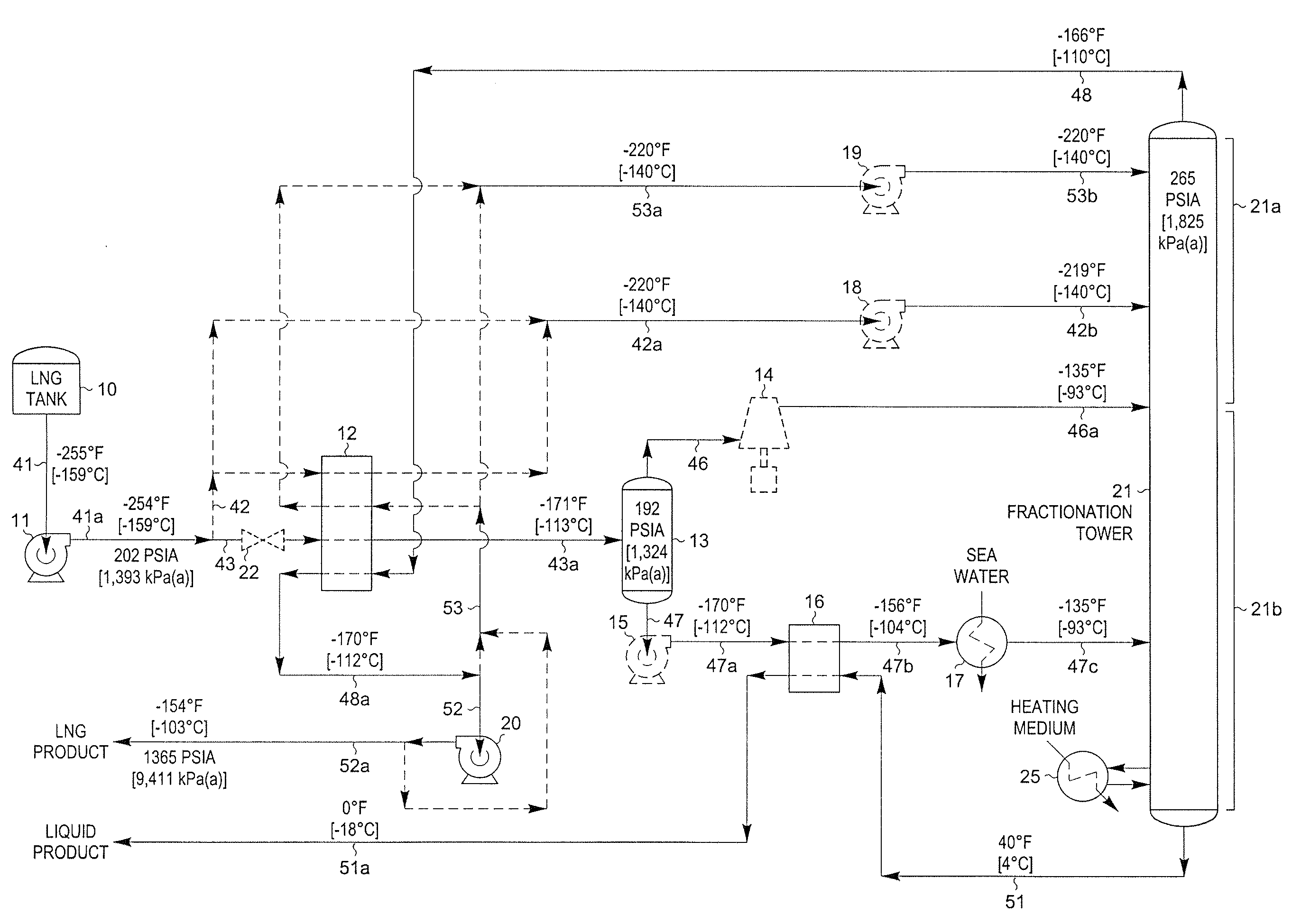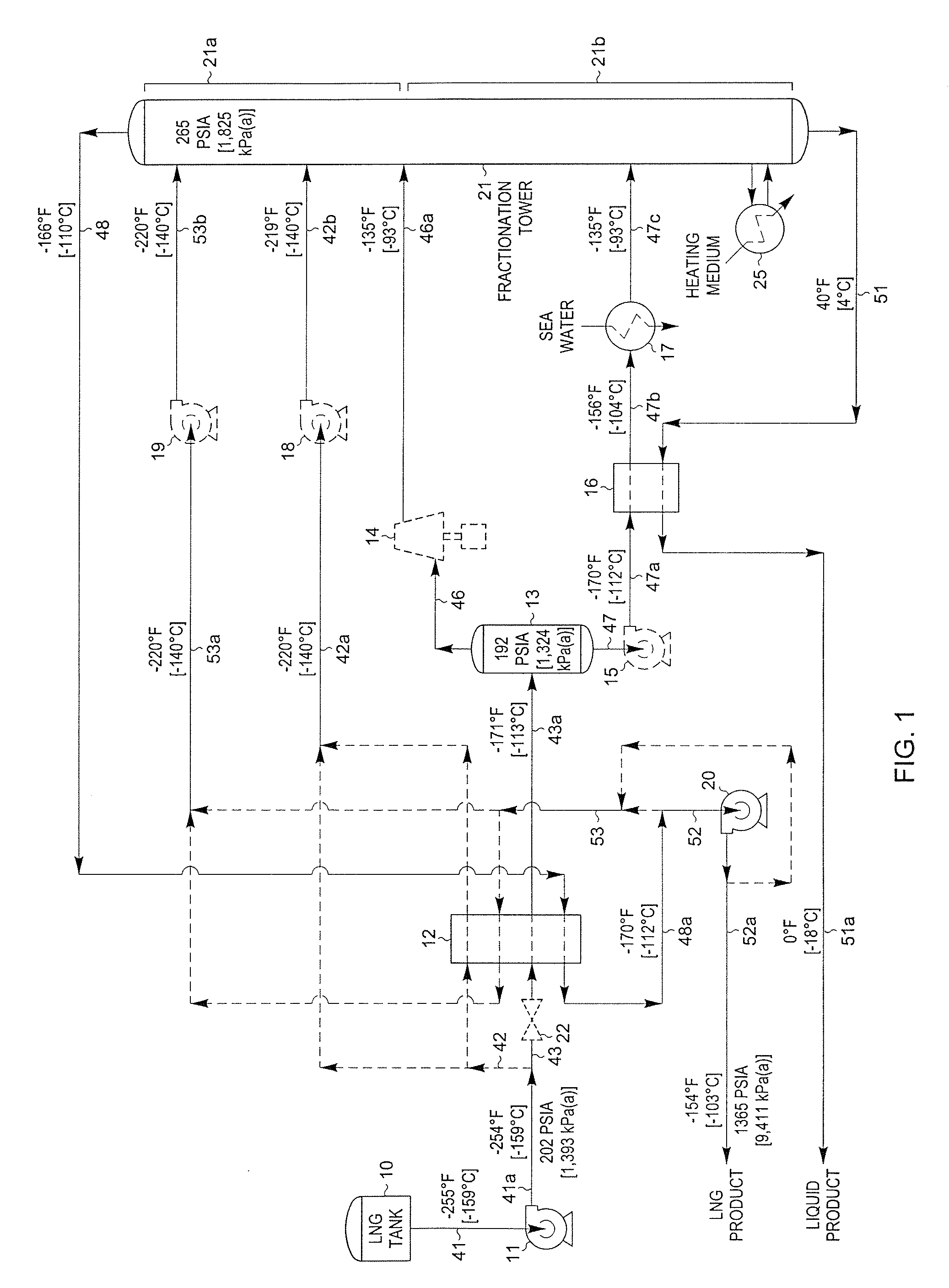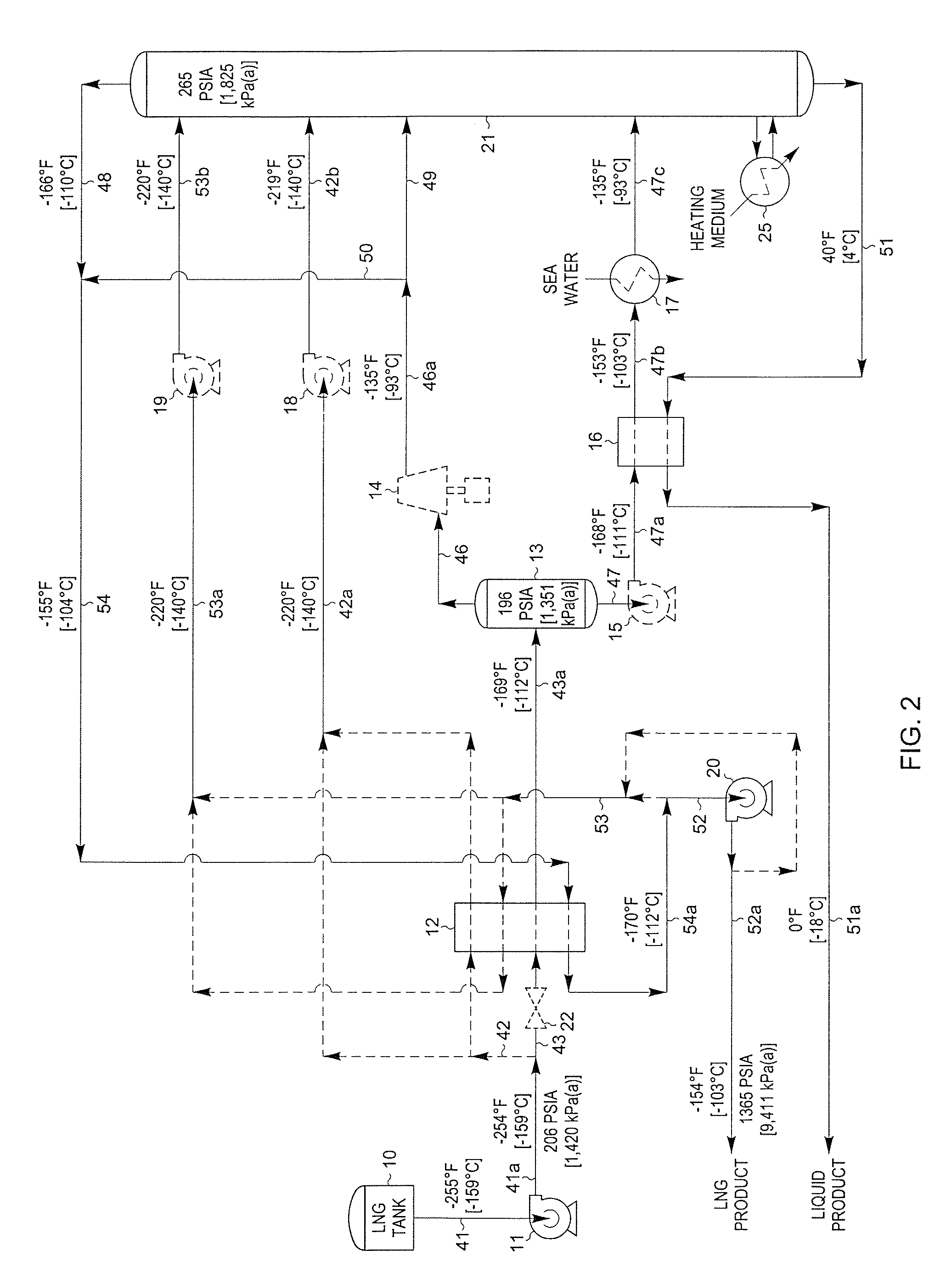Liquefied natural gas processing
a technology of natural gas and processing equipment, applied in the direction of network traffic/resource management, lighting and heating equipment, solidification, etc., can solve the problems of high recovery, low utility cost, and process simplicity, so as to achieve low capital investment and reduce utility costs
- Summary
- Abstract
- Description
- Claims
- Application Information
AI Technical Summary
Benefits of technology
Problems solved by technology
Method used
Image
Examples
example 1
[0011]FIG. 1 illustrates a flow diagram of a process in accordance with the present invention adapted to produce an NGL product containing the majority of the C2 components and heavier hydrocarbon components present in the feed stream.
[0012]In the simulation of the FIG. 1 process, the LNG to be processed (stream 41) from LNG tank 10 enters pump 11 at −255° F. [−159° C.], which elevates the pressure of the LNG sufficiently so that it can flow through heat exchangers and thence to separator 13. Stream 41a exiting the pump is split into two portions, streams 42 and 43. The first portion, stream 42, is heated to −220° F. [−140° C.] (stream 42a) in heat exchanger 12 and then is pumped to higher pressure by pump 18. Pumped stream 42b at −219° F. [−140° C.] is then supplied to fractionation column 21 at an upper mid-column feed point.
[0013]The second portion of stream 41a (stream 43) is heated prior to entering separator 13 so that at least a portion of it is vaporized. In the example show...
example 2
[0022]An alternative embodiment of the present invention is shown in FIG. 2. The LNG composition and conditions considered in the process presented in FIG. 2 are the same as those in FIG. 1. Accordingly, the FIG. 2 process of the present invention can be compared to the embodiment displayed in FIG. 1.
[0023]In the simulation of the FIG. 2 process, the LNG to be processed (stream 41) from LNG tank 10 enters pump 11 at −255° F. [−159° C.]. Pump 11 elevates the pressure of the LNG sufficiently so that it can flow through heat exchangers and thence to separator 13. Stream 41a exiting the pump is split into two portions, streams 42 and 43. The first portion, stream 42, is heated to −220° F. [−140° C.] (stream 42a) in heat exchanger 12 and then is pumped to higher pressure by pump 18. Pumped stream 42b at −219° F. [−140° C.] is then supplied to fractionation column 21 at an upper mid-column feed point.
[0024]The second portion of stream 41a (stream 43) is heated prior to entering separator ...
example 3
[0031]Another alternative embodiment of the present invention is shown in FIG. 3. The LNG composition and conditions considered in the process presented in FIG. 3 are the same as those in FIGS. 1 and 2. Accordingly, the FIG. 3 process of the present invention can be compared to the embodiments displayed in FIGS. 1 and 2.
[0032]In the simulation of the FIG. 3 process, the LNG to be processed (stream 41) from LNG tank 10 enters pump 11 at −255° F. [−159° C.]. Pump 11 elevates the pressure of the LNG sufficiently so that it can flow through heat exchangers and thence to separator 13. Stream 41a exiting the pump is split into two portions, streams 42 and 43. The first portion, stream 42, is heated to −220° F. [−140° C.] (stream 42a) in heat exchanger 12 and then is pumped to higher pressure by pump 18. Pumped stream 42b at −219° F. [−140° C.] is then supplied to fractionation column 21 at an upper mid-column feed point.
[0033]The second portion of stream 41a (stream 43) is heated prior to...
PUM
 Login to View More
Login to View More Abstract
Description
Claims
Application Information
 Login to View More
Login to View More - R&D
- Intellectual Property
- Life Sciences
- Materials
- Tech Scout
- Unparalleled Data Quality
- Higher Quality Content
- 60% Fewer Hallucinations
Browse by: Latest US Patents, China's latest patents, Technical Efficacy Thesaurus, Application Domain, Technology Topic, Popular Technical Reports.
© 2025 PatSnap. All rights reserved.Legal|Privacy policy|Modern Slavery Act Transparency Statement|Sitemap|About US| Contact US: help@patsnap.com



